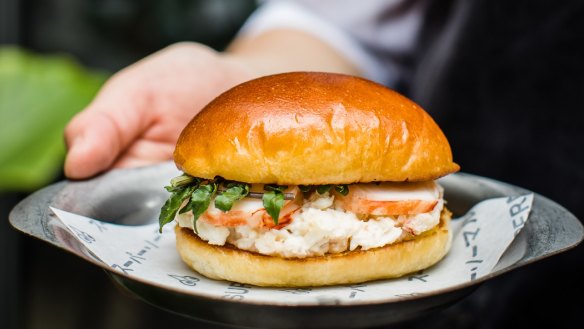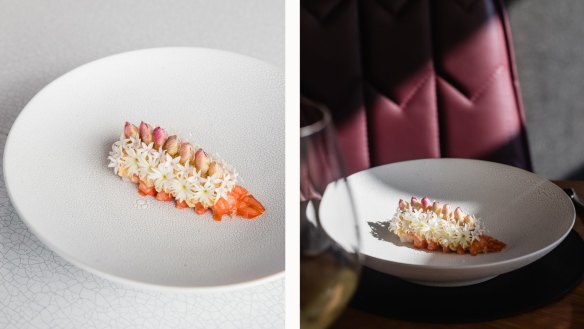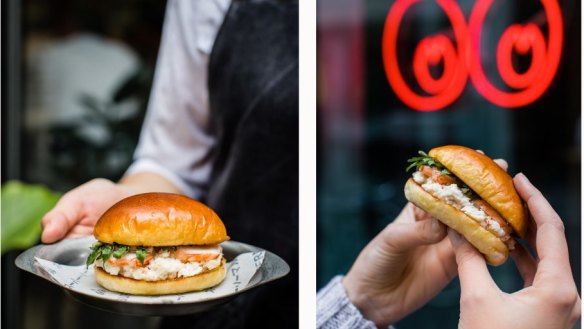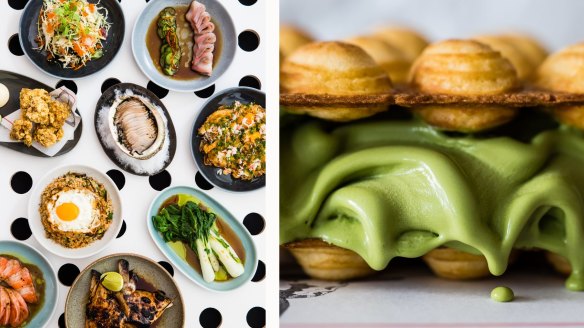The secrets to photographing food like a pro

Pick your toy – smartphone, DSLR, it doesn't really matter. With so many different ways to capture great imagery, it's important to understand the basics, especially when it comes to photographing food. Whether you're a participant or an observer, here are some of the top tips that I like to keep in mind as a food photographer and co-director of Buffet (a content studio for the food and drink industry). With the intention of giving a personal perspective to my photography tips, I've done so via a few of my favourite photo shoots to date.
Light
Photographers are either creating or chasing light to work with. Like a moth to a flame, I'm a chaser. My preference is natural light which means I have to be flexible depending on what the light is doing on any given day. I'm often shooting food on location in various restaurants, which adds yet another dimension to each shoot, having to navigate the unique lighting environments within each space.
My go-to for shooting food in natural light is to find diffused, airy, ambient light. Soft light like this is pretty inoffensive, and allows what you're capturing on the plate to speak for itself. I find it's one of the best ways to capture the true colour and form of the dish or dishes in front of you. The flipside to shooting in diffused, soft light would be to put your plate down in a pocket of full sun. I used to steer clear of shooting food in straight sunlight. I found it harsh and contrasty and thought the results would just end up looking very unflattering. I've since come full circle, so when and where the opportunity presents itself, I'll give it a shot, so to speak.
I often find shooting in full sun works best in the morning or late afternoon, the middle of the day can be pretty harsh. What you'll find is a harder, more graphic feel to your shot where the shadows are emphasised and the overall look is a lot more contrasting. If your shot includes other props such as glasses, cutlery or other dishes, the shadows from these objects can also add that extra dimension to your shot.

To give you an example on the difference between the two styles I've included images from a recent shoot I worked on with the team at Quay Restaurant in Sydney. Chef Peter Gilmore presented this stunningly sculptural marron dish and we wanted to look at different ways that we could shoot this. I shot the image in both diffused natural light and full afternoon sunlight. You can see the difference, although I like how crisp the diffused light is, we all agreed that the interplay of shadows with the dish and its surroundings in the full sun image created a much more unusual look and perspective of the dish.
Composition
Composition is another one of my favourite things to experiment with when I'm shooting food. Some like to shoot food from the same angle, in the same light and really hone in on a specific style. While I like to maintain a style and look with my food photography overall, I think it's important to mix it up and compose your shot in innovative ways. This is a good philosophy to adopt when you need to think of multiple ways to shoot the same dish. Alternatively if you are shooting at different restaurants for different clients, it's important to make sure you maintain your stylistic integrity but also create imagery that looks and feels unique to that client and their venue.

When I think about the composition of my shots and how I'm going to frame the food within each image, there are a few go-tos that I like to run through. , It's really important to choose the right angle to suit the food you're shooting. Supernormal's famous lobster rolls for instance, need to be shot looking directly into its filling. You can see in the shot on the left, the more I move overhead with my angle, the less enticing the food looks. This is because you start to lose sight of the delicious lobster filling. Once you lock in your rough angle you can start incorporating more aspects into your frame like hands, different plates and props in the background to give your shot depth.

Lastly, and one of my favourite ways to shoot food, is to put the macro lens on and go in tight. Oozy, textural food screams for the macro! Again, I used to be a little adverse to going full "food porn" style and filling the frame but I've since come to love it on the right type of dish. If you don't have a macro lens or you're on your smartphone, just get in as close as you can, fill the frame and have fun with the textures that are in front of you. One fun example I wanted to share was the oozing matcha waffle dessert at Cho Cho San. Melting ice-cream and macro, a match made in heaven. You can see how going in close makes for an enticing and visceral shot.
Awareness
I wanted to finish on this last tip, as it's not really a technical takeaway but an important one nonetheless. Being self-aware in restaurants and navigating around what is essentially a workspace for the staff, as well as a venue where customers come to dine and relax, is a really important part of being a competent food photographer. One of the best ways to execute your photography in public spaces is to constantly be aware of your environment and try to plan ahead as much as possible. It's always good to have a peek at the menu or the shot list ahead of the shoot so you have an idea of what you're shooting. Although food often lends itself to more still life photography, it's still timely business. Often your plate of food is at its prime when it gets given you to and you need to move fast before it starts to wilt. If you're out dining and shooting for fun, try not to spend too long shooting your food so that you can eat it before it gets cold.
So now, hopefully well equipped with a few more tips, go forth and shoot. Food photography is such a great way to appreciate food. If you're interested in more tips and tricks I'll be presenting at the Editor's Dinner on Friday, June 14, for Melbourne's Good Food Month and doing a live demonstration on how I like to shoot food.
Buy tickets to the Editor's Dinner for Melbourne Good Food Month
The best recipes from Australia's leading chefs straight to your inbox.
Sign up